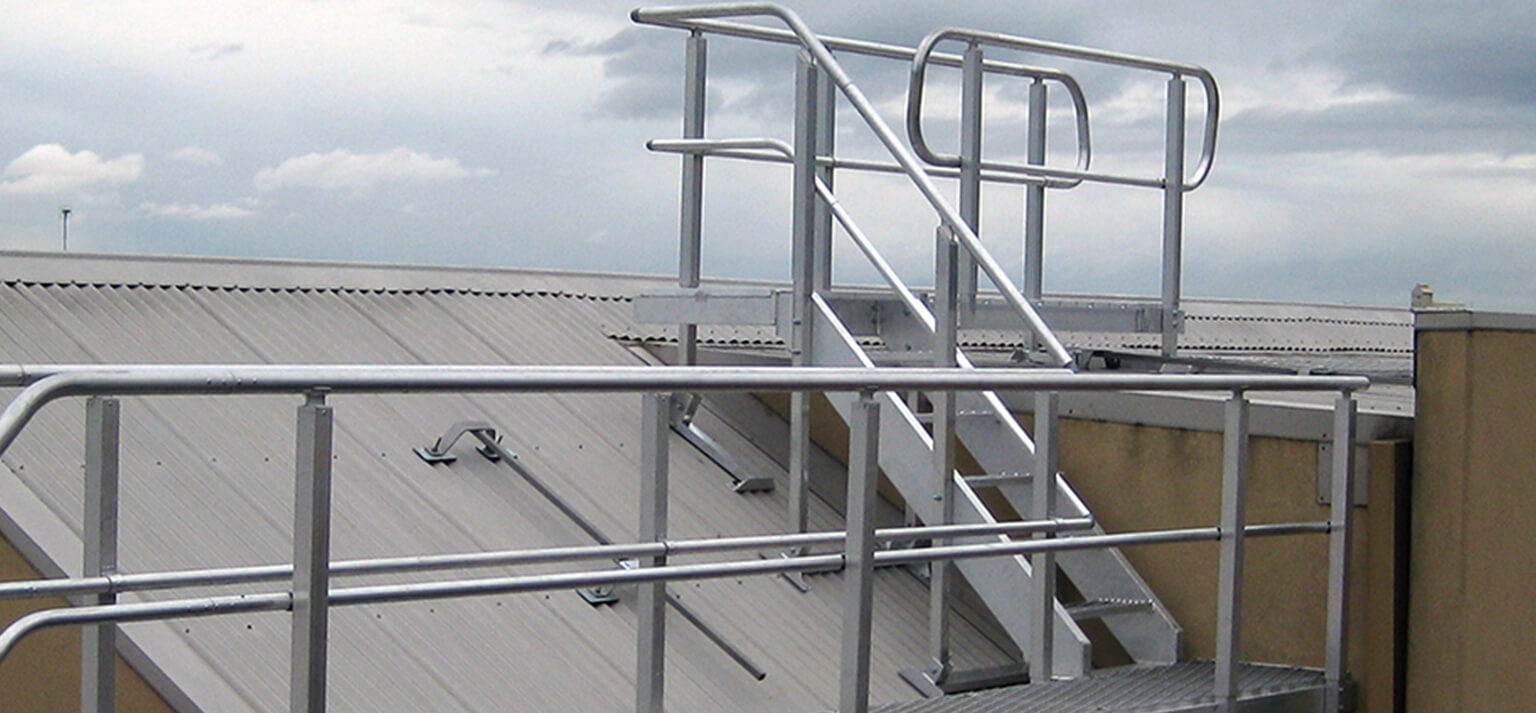
Working safely at height …the passive approach
A fall is the single most serious risk associated with working at height, leading to death or long-term injuries. Even from a relatively short distance, a fall can cause severe injuries, including fractures, spinal cord injury, concussions and brain damage.
Where there is a risk to health and safety associated with a fall, a person conducting a business or undertaking at a workplace must meet the Work Health and Safety requirements set out in the acts and regulations in their state or territory.
According to Safe Work Australia, in 2020, falls from a height accounted for 11% of worker fatalities (22 deaths).
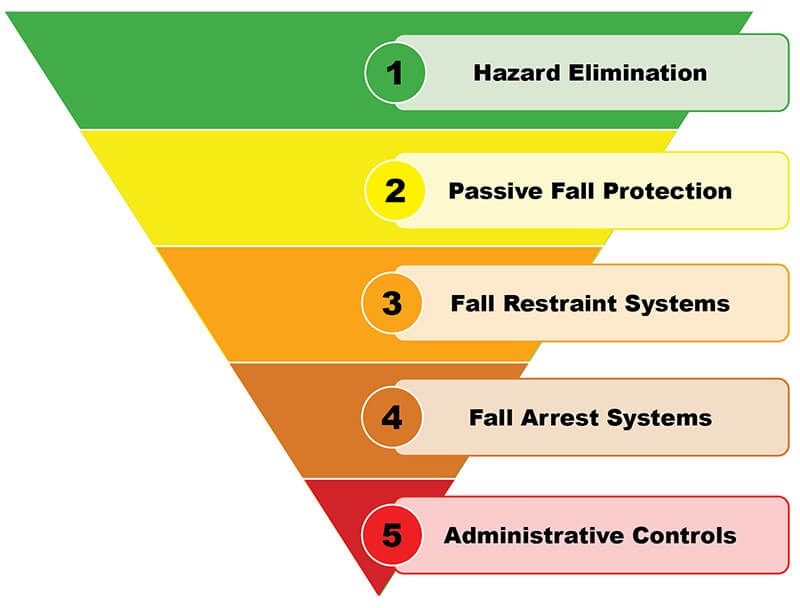
In line with the hierarchy of fall protection to eliminate or reduce the risk of falls from height, the preferred approach is to eliminate the exposure to the fall hazard, but this is not always possible. The following recommended control measure is passive fall protection.
Passive fall protection
Passive fall protection is a method of using materials or equipment that creates a fixed system to prevent workers from reaching hazardous areas where falls might occur, essentially creating a barrier that requires minimal or no interaction by the user. After initial installation, a passive fall prevention system requires ongoing inspections to ensure its integrity but does not require continual adjustment, alteration or operation to perform its function.
Examples of passive fall prevention devices include temporary work platforms, roof safety mesh, perimeter scaffolding, perimeter guardrails, barriers and perimeter screens.
Guardrail passive fall protection systems
Guardrails are an excellent example of a passive fall protection system when located within a danger zone as they remove the risk of falling by placing a barrier between the worker and the edge. Depending on the application, guardrails provide an ideal passive height safety solution to areas requiring frequent access by maintenance workers and ensure controlled access within clearly defined areas protected by the system.
Guardrails are engineered to withstand the impact of someone falling or pushing against them, delivering effective fall prevention:
- At the edges of roofs.
- At the edges of mezzanine floors, walkways, stairways, shafts, pits, ramps and landings.
- The perimeters of skylights and other fragile roof material.
- The confines of buildings and other structures.
- On top of plant and installations that require frequent access.
- Around openings in roof and floor structures.
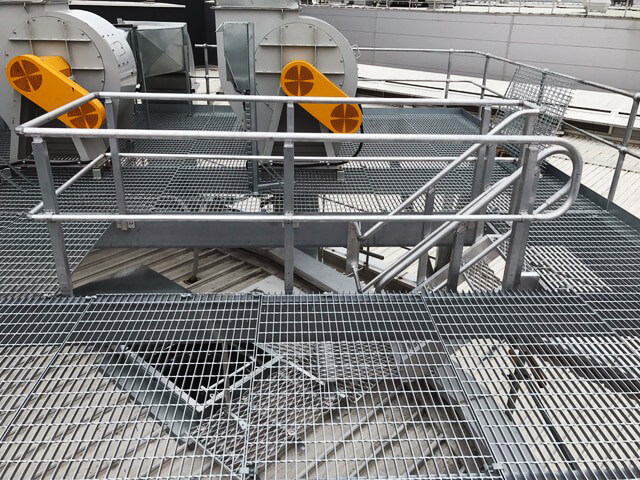
Guardrails are highly cost-effective, low maintenance, require minimal training and are an effective way to manage the risks associated with working at heights on roofs and other structures. At first glance, subject to the circumstances, installing anchors over guardrails may appear a less expensive option. However, the ongoing long-term costs of; annual recertification, the introduction of new procedures and work methods, the purchase of harnesses, lanyards, SRL’s and the training required for their use all need factoring into the equation to determine which solution is more appropriate.
Hi-Rise guardrail systems
Hi-Rise’s engineering and design teams can custom fabricate a compliant Australian Standards guardrail system to meet your exact specifications and requirements. From aluminium or galvanised solutions to powder coatings that provide the best corrosion protection, colour-matched to your site requirements for an aesthetically pleasing finish.
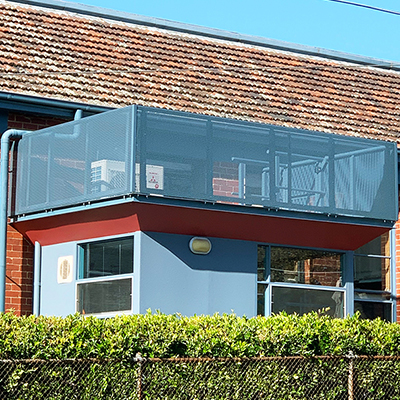
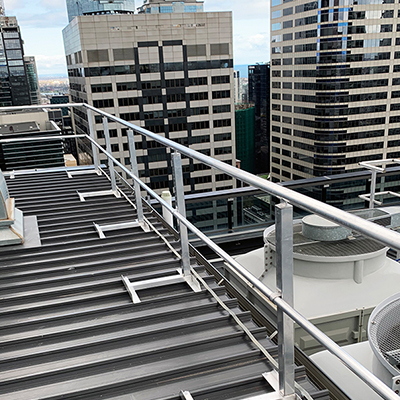
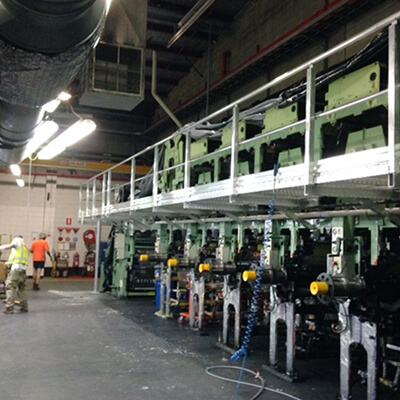
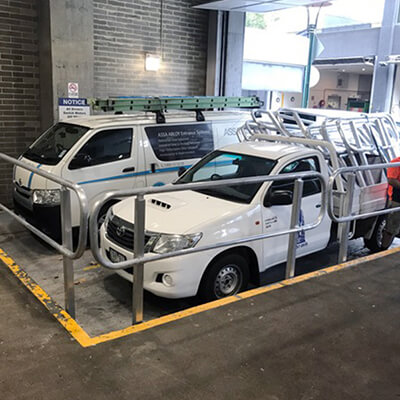
Working at height exposes workers to a variety of hazards. As the site owner or facility manager, the statutory obligation to provide a safe work environment lies with you. Not sure if a guardrail is practical or the right solution to manage the risks of working at heights for your access requirements? Need help deciding? Get in touch with our team of experts for professional advice, guidance and recommendations
